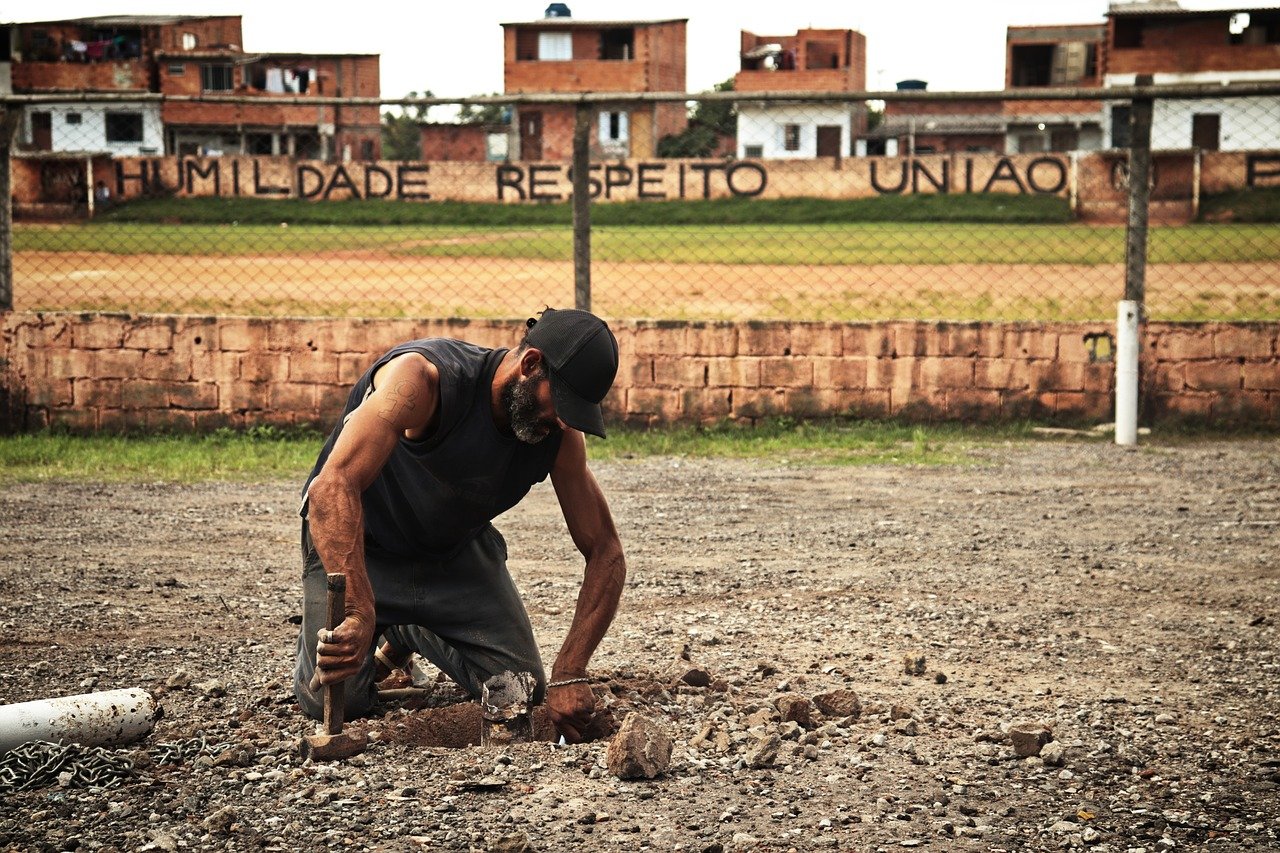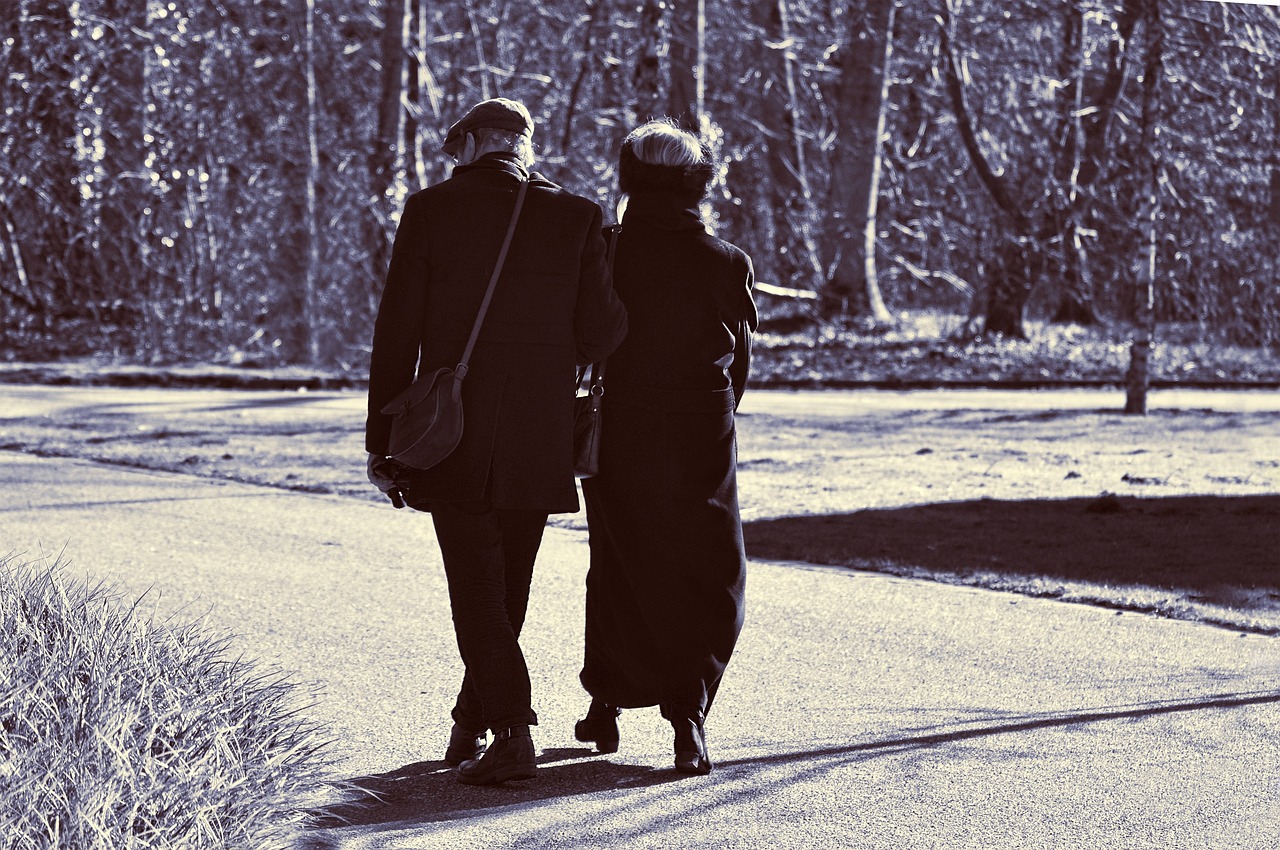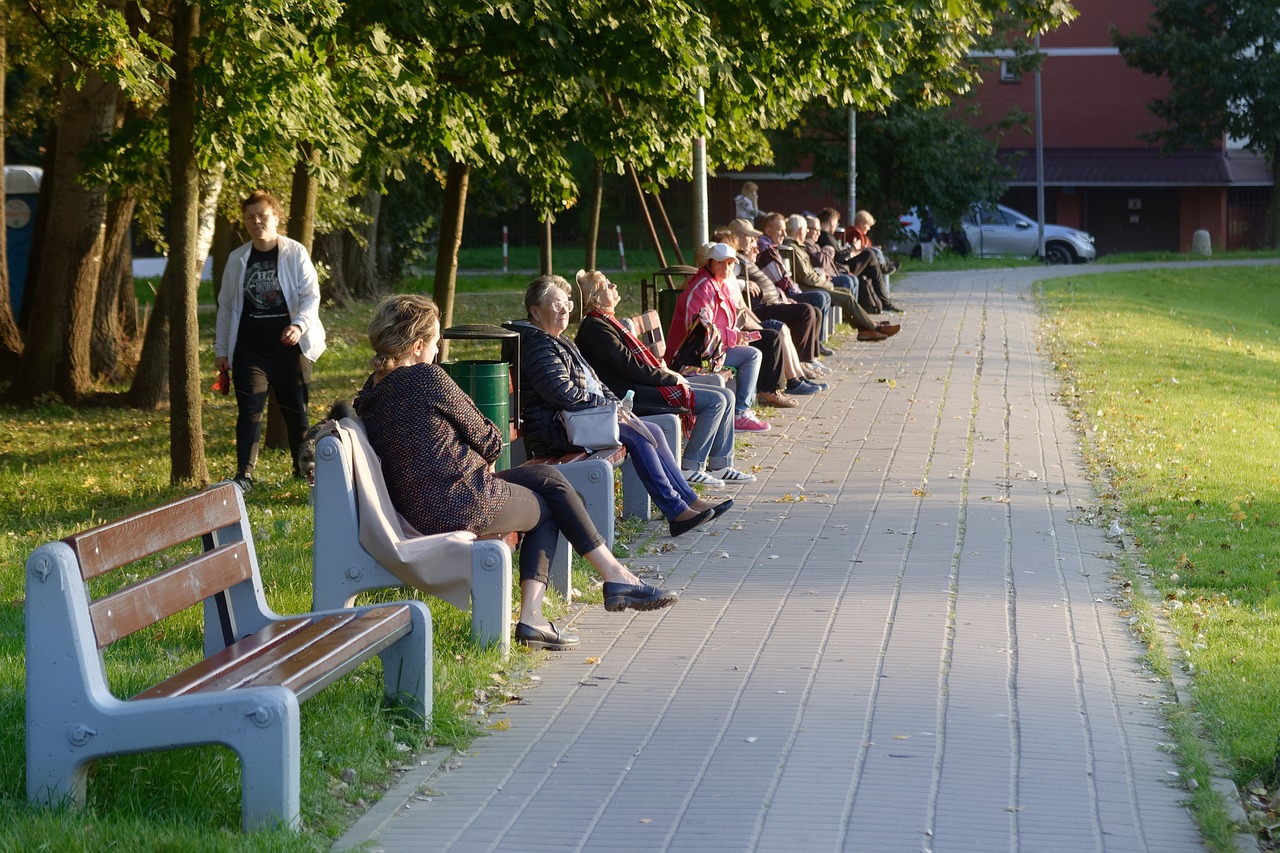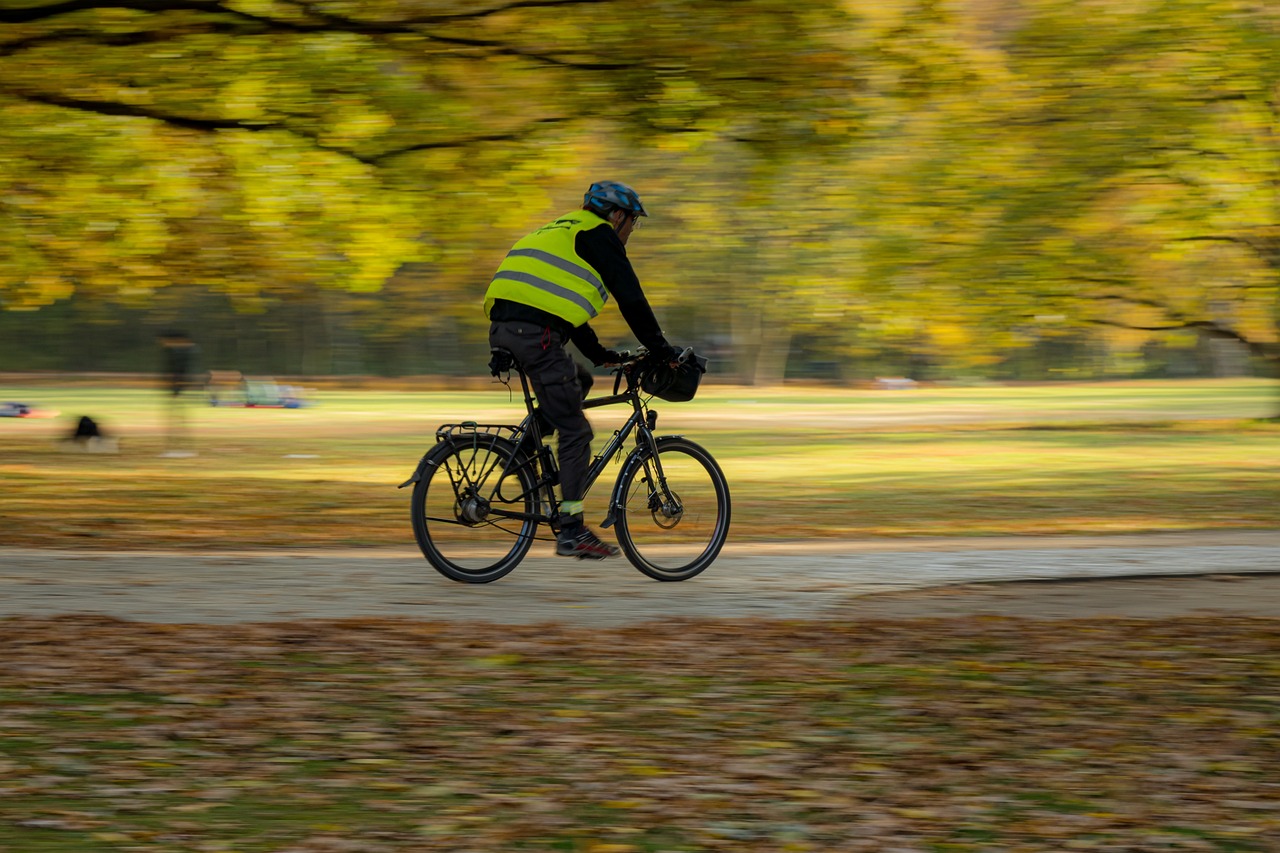Top Techniques for Boosting Resilience in the Elderly
This article explores effective strategies to enhance resilience among elderly individuals, focusing on mental, emotional, and physical well-being to improve their quality of life and adaptability to challenges.
Resilience refers to the ability to bounce back from adversity, a trait that becomes increasingly important as we age. For older adults, the landscape of life can be dotted with challenges, from health issues to the loss of loved ones. These hurdles can feel like formidable mountains, but resilience acts as a bridge, helping individuals navigate through the rough patches. Imagine resilience as a sturdy umbrella in a storm; it may not stop the rain, but it protects you from getting drenched. Understanding the unique challenges faced by older adults is crucial in fostering this essential quality. As we delve deeper into this topic, we’ll uncover the importance of resilience in maintaining health and happiness in our golden years.
One of the cornerstones of resilience is the presence of strong social ties. For elderly individuals, having a network of friends and family can significantly bolster their emotional well-being. Think of social connections as the roots of a tree; they anchor the tree firmly in the ground, allowing it to withstand strong winds. When older adults engage with friends and community members, they not only find emotional support but also reduce feelings of isolation. In fact, studies have shown that those with robust social networks tend to have better health outcomes and a more positive outlook on life. So, how can we help our elderly loved ones foster these vital connections?
Creating robust support networks is vital for resilience. Elderly individuals can connect with family, friends, and community resources to find emotional and practical support. Here are some strategies:
- Encourage regular family gatherings or virtual meet-ups.
- Help them join local clubs or organizations that align with their interests.
- Assist in finding volunteer opportunities that allow them to give back to the community.
By taking these steps, elderly individuals can cultivate a sense of belonging and purpose that significantly enhances their resilience.
Participating in community events can enhance social connections and provide a sense of purpose. Local activities such as art classes, book clubs, or exercise groups not only promote physical health but also allow older adults to meet new people and forge meaningful relationships. Imagine attending a weekly pottery class where you not only learn a new skill but also share laughs and stories with fellow participants. These interactions can be incredibly enriching and contribute to a stronger sense of community.
Family relationships play a significant role in resilience. Regular communication, whether through phone calls, video chats, or in-person visits, can help elderly loved ones feel connected and valued. Shared activities, like cooking a family recipe or watching a favorite movie together, can strengthen those bonds. Think of family ties as the threads in a tapestry; each thread adds color and texture, creating a beautiful picture of support and love. By nurturing these relationships, we can help our elderly family members feel cherished and less isolated.
Physical health is integral to resilience. Regular exercise, a balanced diet, and routine medical care are essential components that help elderly individuals maintain their strength and vitality. Engaging in physical activity, even something as simple as a daily walk, can boost mood and energy levels. Nutrition plays an equally important role; think of it as fuel for the body. A well-balanced diet rich in fruits, vegetables, lean proteins, and whole grains can empower seniors to face daily challenges with vigor.
Mental health is crucial for resilience. Techniques such as mindfulness, cognitive-behavioral strategies, and therapy options can provide elderly individuals with tools to cope with stress and anxiety. Just as a gardener tends to their plants, nurturing mental health requires attention and care. By fostering a positive mindset, seniors can improve their overall well-being and adaptability.
Mindfulness practices can significantly enhance mental resilience. Meditation and breathing exercises help elderly individuals manage stress and improve emotional regulation. Imagine sitting quietly, focusing on your breath, and letting go of worries—this simple practice can create a profound sense of peace. Encouraging elderly loved ones to explore mindfulness can lead to improved mental clarity and emotional stability.
Engaging in cognitive activities is essential for mental sharpness. Puzzles, games, and learning opportunities stimulate the mind and promote resilience in older adults. Activities like crossword puzzles or memory games can be as invigorating as a workout for the brain. By keeping their minds active, elderly individuals can enhance their cognitive functions and maintain a sense of accomplishment.
Q: What are some simple ways to help elderly individuals build resilience?
A: Encourage regular social interactions, promote physical activity, and support mental health practices like mindfulness.
Q: How can family members assist in maintaining social connections?
A: Regular communication through calls or visits, organizing family gatherings, and encouraging participation in community events can help.
Q: Why is physical health important for resilience?
A: Physical health contributes to overall well-being and energy levels, enabling elderly individuals to face challenges more effectively.

Understanding Resilience in the Elderly
Resilience is a term that often gets tossed around, but what does it really mean, especially for our elderly loved ones? In simple terms, resilience refers to the ability to bounce back from adversity, to adapt, and to thrive despite the challenges life throws our way. For older adults, this could mean navigating the ups and downs of aging, dealing with health issues, or coping with the loss of loved ones. It’s a bit like being a rubber band; the more you stretch it, the more it can return to its original shape.
As we age, we face unique challenges that can test our resilience. Physical decline, cognitive changes, and the emotional toll of losing friends and family members can create a perfect storm of stress. However, understanding and enhancing resilience becomes crucial to maintaining not just health, but also happiness. Think of resilience as a protective shield that helps the elderly navigate the rough waters of life. When they possess this shield, they are better equipped to handle stress, adapt to change, and recover from setbacks.
Research shows that resilient older adults tend to have better health outcomes and a higher quality of life. They are more likely to engage in healthy behaviors, maintain social connections, and pursue new interests. This adaptability is not just about surviving; it’s about thriving in the face of adversity. So, how can we help our aging loved ones build and maintain their resilience? It starts with understanding the factors that contribute to resilience, which can include:
- Social Support: Having a network of friends and family can provide emotional and practical support.
- Physical Health: Regular exercise and a balanced diet play a significant role in maintaining resilience.
- Mental Well-being: Engaging in activities that promote mental health, such as mindfulness and cognitive exercises, is essential.
By focusing on these factors, we can create an environment that nurtures resilience in the elderly. It’s not just about helping them cope with difficulties; it’s about empowering them to embrace life with vigor and positivity. In the following sections, we will explore practical strategies to enhance resilience, emphasizing social connections and physical and mental well-being.

The Role of Social Connections
When it comes to enhancing resilience in the elderly, one of the most powerful tools at their disposal is the ability to forge and maintain strong social connections. Imagine a sturdy bridge: without its support beams, it would crumble under pressure. Similarly, social ties act as the support beams for older adults, helping them navigate the often turbulent waters of aging. These connections not only provide emotional support but also play a crucial role in reducing feelings of isolation and loneliness, which can be detrimental to mental and physical health.
Studies have shown that elderly individuals with strong social networks tend to experience lower levels of stress, anxiety, and depression. It's like having a safety net; when life throws unexpected challenges their way, they can rely on their friends and family to catch them. Engaging with others can also enhance their sense of purpose and belonging, making them feel valued and appreciated. This sense of community can be a game-changer, leading to improved overall well-being and a more fulfilling life.
Building these connections can take various forms. For instance, participating in community events or local clubs can be a fantastic way for older adults to meet new people and build friendships. Whether it's joining a book club, attending a gardening workshop, or simply volunteering at a local charity, the opportunities are endless. Moreover, maintaining family ties is equally important. Regular phone calls, video chats, or family gatherings can strengthen these bonds, reminding elderly loved ones that they are never truly alone.
Here are some effective strategies to foster these vital social connections:
- Join Local Groups: Look for community centers or organizations that offer activities tailored for seniors, such as art classes, fitness groups, or travel clubs.
- Volunteer: Engaging in volunteer work not only helps others but also allows older adults to meet like-minded individuals who share their interests.
- Utilize Technology: Encourage the use of social media or video calling apps to stay connected with family and friends, especially those who may live far away.
In essence, the role of social connections in boosting resilience among the elderly cannot be overstated. These relationships provide a sense of stability and security, making it easier for older adults to face life's challenges head-on. By nurturing these connections, we not only enhance their quality of life but also empower them to thrive in their golden years.

Building Support Networks
Creating robust support networks is essential for enhancing resilience among elderly individuals. As we age, the importance of having a reliable circle of friends, family, and community members becomes increasingly clear. Imagine navigating the challenges of life without a safety net—it's daunting! Support networks not only provide emotional backing but also practical assistance during tough times. So, how can the elderly effectively build these networks?
First and foremost, communication is key. Regularly reaching out to family and friends can help maintain those vital connections. Whether it’s a simple phone call, a video chat, or even a handwritten letter, these small gestures can significantly strengthen relationships. Moreover, utilizing social media platforms can bridge the gap for those who may have mobility issues or live far away. It’s like having a virtual coffee catch-up!
Another effective strategy is to actively seek out community resources. Many local organizations offer programs specifically designed for seniors, focusing on social interaction and support. These can range from senior centers that host activities and events to volunteer groups looking for helping hands. Engaging in such community activities not only fosters new friendships but also cultivates a sense of belonging. It’s like planting seeds in a garden; with care and attention, they can bloom into beautiful relationships.
Additionally, participating in hobbies or interest groups can be a fantastic way to meet like-minded individuals. Whether it’s a book club, gardening group, or art class, shared interests create a natural bond among participants. These gatherings can serve as a foundation for deeper connections, allowing elderly individuals to feel understood and valued.
In summary, building support networks is about more than just having people around; it’s about fostering genuine connections that enhance emotional and practical well-being. By embracing communication, utilizing community resources, and engaging in shared interests, elderly individuals can create a resilient support system that stands strong against life's challenges.
- What are the benefits of having a support network for the elderly? A support network helps reduce feelings of isolation, provides emotional support, and offers practical assistance during challenging times.
- How can elderly individuals find community resources? Local community centers, libraries, and online platforms can provide information about senior programs and activities.
- What types of activities can help build connections? Activities such as joining clubs, attending classes, or volunteering can facilitate new friendships and strengthen existing relationships.

Engaging in Community Activities
Engaging in community activities is not just a way to pass the time; it’s a powerful tool for enhancing resilience among elderly individuals. When older adults participate in local events, clubs, or volunteer opportunities, they open the door to a world of social interaction and support that can significantly improve their quality of life. Imagine being part of a vibrant community where every interaction adds a layer of strength to your emotional well-being. It’s like adding bricks to a wall; each connection fortifies the structure of resilience.
These activities can take many forms, from joining a local gardening club to participating in art classes or even attending community fitness sessions. The beauty of these engagements is that they not only provide a sense of purpose but also foster new friendships. For instance, when an elderly person joins a weekly book club, they not only get to enjoy engaging stories but also share thoughts and experiences with others, creating bonds that are both meaningful and supportive.
Moreover, community activities can combat feelings of isolation that often plague the elderly. When individuals feel connected to a group, they are less likely to experience loneliness, which can have detrimental effects on both mental and physical health. A study published in the Journal of Health and Social Behavior found that older adults who engage in social activities are more likely to report higher levels of happiness and lower levels of depression. This connection is akin to a safety net, catching individuals when they face life’s inevitable challenges.
Here are some examples of community activities that can be particularly beneficial for the elderly:
- Volunteering: Helping others can provide a sense of fulfillment and purpose.
- Joining Clubs: Whether it’s a knitting group or a walking club, shared interests can spark new friendships.
- Participating in Local Events: Festivals, fairs, and workshops offer opportunities to socialize and learn something new.
- Fitness Classes: Group exercise not only promotes physical health but also encourages camaraderie.
In addition to these activities, many communities offer resources specifically designed for seniors. Senior centers, for instance, often host a variety of programs, from educational workshops to fitness classes tailored for older adults. These centers act as hubs of activity and support, making it easier for seniors to find and engage in activities that resonate with their interests.
Ultimately, engaging in community activities is about more than just keeping busy; it’s about building a network of support that can help navigate the ups and downs of life. Just like a strong tree that withstands storms due to its deep roots, elderly individuals who actively participate in their communities can develop a resilience that helps them thrive in the face of adversity.
Q: What types of community activities are best for elderly individuals?
A: Activities that promote social interaction, such as volunteering, joining clubs, or participating in fitness classes, are particularly beneficial.
Q: How can community engagement improve mental health in the elderly?
A: Engaging with others can reduce feelings of loneliness and depression, leading to improved overall mental well-being.
Q: Are there specific resources available for seniors to find community activities?
A: Yes, local senior centers, libraries, and community boards often list events and activities tailored for older adults.
Q: Can participating in community activities help with physical health?
A: Absolutely! Many community activities involve physical movement, which can help maintain strength and vitality.

Maintaining Family Ties
Family relationships are like the roots of a tree; they provide stability and nourishment, especially for elderly individuals who may face various life challenges. Maintaining strong family ties is essential for enhancing resilience among older adults. It’s not just about sharing holidays or family dinners; it’s about creating a support system that can help them navigate the ups and downs of life. Regular communication, whether through phone calls, video chats, or in-person visits, can make a world of difference. Imagine the joy of a simple phone call from a grandchild or a surprise visit from a loved one—these moments can uplift spirits and foster a sense of belonging.
One effective way to strengthen family bonds is by engaging in shared activities. Organizing family game nights, cooking together, or even participating in community events as a family can create lasting memories and deepen connections. When families collaborate in activities, they not only share laughter and joy but also reinforce their support for one another. Think of it as building a bridge; each shared experience adds a plank, making the bridge stronger and more resilient against life's storms.
Moreover, it’s important to encourage open lines of communication. This means not only sharing good news but also being there to listen during tough times. Elderly individuals often have a wealth of wisdom and experiences to share, and when family members actively listen, it validates their feelings and helps them feel valued. Consider setting up a family group chat or a regular video call schedule to keep everyone connected, regardless of distance. This consistent interaction can help alleviate feelings of loneliness and isolation that many elderly individuals experience.
In addition, family members can play a crucial role in helping elderly loved ones stay engaged with their interests and hobbies. For example, if an older adult loves gardening, family members can join them in the garden or help set up a small indoor planting area. This not only provides physical activity but also stimulates mental engagement and emotional satisfaction. It’s these little gestures that can significantly impact an elderly person’s resilience and overall happiness.
Ultimately, maintaining family ties is about being present, showing love, and ensuring that elderly individuals feel supported and cherished. As the saying goes, “Family is not an important thing, it’s everything.” By investing time and effort into nurturing these relationships, families can create a strong network of support that enhances the resilience of their elderly members, helping them to thrive even in challenging times.
- How often should I communicate with my elderly family members? Regular communication is key. Aim for at least once a week, but more frequent interactions can provide additional support.
- What activities can we do together as a family? Consider cooking, playing games, watching movies, or engaging in hobbies that everyone enjoys.
- How can I help my elderly loved ones feel less isolated? Encourage them to participate in family gatherings, community events, or even virtual meetings to stay connected.

Promoting Physical Health
When we talk about resilience in the elderly, we can't overlook the crucial role of physical health. It’s like the foundation of a house; if the foundation is weak, everything built on it is at risk. For older adults, maintaining physical health means staying active, eating well, and keeping up with routine medical care. But why is this so important? Well, think of it this way: just as a car needs regular maintenance to run smoothly, our bodies require care to function optimally.
Regular exercise is one of the best ways to boost physical health. It doesn’t mean you have to run marathons or lift heavy weights; even gentle activities like walking, swimming, or yoga can make a world of difference. These activities not only help in maintaining strength and flexibility but also enhance cardiovascular health, which is vital as we age. In fact, studies show that older adults who engage in regular physical activity experience lower rates of chronic diseases, improved mood, and better cognitive function.
Nutrition plays an equally significant role. A balanced diet rich in fruits, vegetables, whole grains, and lean proteins can provide the necessary nutrients to support overall health. It’s essential to focus on foods that are high in antioxidants and omega-3 fatty acids, as they can help reduce inflammation and support brain health. Here’s a quick look at some beneficial foods:
| Food Type | Benefits |
|---|---|
| Fruits (e.g., berries) | Rich in antioxidants, which combat oxidative stress. |
| Leafy Greens | High in vitamins and minerals that support bone health. |
| Fish (e.g., salmon) | Contains omega-3 fatty acids that are great for heart and brain health. |
| Nuts and Seeds | Provide healthy fats and protein, promoting energy and satiety. |
Routine medical care is another pillar of physical health. Regular check-ups can help catch potential health issues before they become significant problems. Whether it’s managing blood pressure, monitoring cholesterol levels, or keeping an eye on diabetes, proactive healthcare can lead to better outcomes. It’s like having a safety net; it gives both the elderly and their families peace of mind knowing that they’re being looked after.
Moreover, it’s essential to encourage elderly individuals to listen to their bodies. Sometimes, they may feel hesitant to speak up about discomfort or pain, thinking it’s just a part of aging. However, staying attuned to their bodies can help them respond to issues early on, ensuring they maintain their independence and quality of life.
In summary, promoting physical health in the elderly is about more than just avoiding illness; it’s about enhancing the quality of life. By incorporating regular exercise, a balanced diet, and routine medical care, older adults can not only boost their resilience but also enjoy a more vibrant and fulfilling life. So, let’s encourage our elderly loved ones to take charge of their health—after all, a healthy body is a resilient body!

Enhancing Mental Well-being
Mental health is a cornerstone of resilience, especially for elderly individuals navigating the complexities of later life. As we age, it's not uncommon to encounter challenges that can weigh heavily on our minds. The good news? There are several effective techniques that can significantly enhance mental well-being, helping older adults not just cope, but thrive. Think of mental well-being as a garden; it requires regular care, attention, and the right environment to flourish. Without it, even the strongest plants can wither away.
One of the most powerful tools for enhancing mental health is mindfulness. Mindfulness practices, such as meditation and deep breathing exercises, have been shown to help individuals manage stress and anxiety. Imagine sitting quietly, focusing on your breath, and allowing the worries of the day to drift away like leaves on a stream. This simple act can create a profound sense of peace and clarity. Studies have demonstrated that older adults who engage in mindfulness practices report lower levels of stress and improved emotional regulation. It’s like giving your mind a refreshing spa day!
In addition to mindfulness, engaging in cognitive activities is crucial for maintaining mental acuity. Activities that challenge the brain, such as puzzles, crosswords, and memory games, can be both enjoyable and beneficial. They not only keep the mind sharp but also provide a sense of accomplishment. Think of it as a workout for your brain—just like lifting weights builds muscle, these activities strengthen mental resilience. A study published in the Journal of Aging Research found that seniors who participated in regular cognitive training showed significant improvements in their overall cognitive function.
To further enhance mental well-being, it’s essential to seek out therapy options. Professional support can be a game-changer, especially for those dealing with feelings of isolation or depression. Therapists can provide valuable coping strategies tailored to individual needs. Whether it’s through traditional talk therapy, group therapy, or even art and music therapies, the goal is to create a safe space for expression and healing. This support is akin to having a trusty guide while navigating the sometimes rocky terrain of aging.
Moreover, engaging in social activities can significantly bolster mental health. Connecting with others, whether through community centers, clubs, or even online platforms, fosters a sense of belonging and reduces feelings of loneliness. In fact, studies have shown that maintaining strong social connections can lead to better mental health outcomes and increased longevity. Remember, it’s not just about quantity but quality; having a few close friends can be more beneficial than a large network of acquaintances.
To summarize, enhancing mental well-being in the elderly involves a multifaceted approach that includes mindfulness practices, cognitive activities, therapy options, and strong social connections. These elements work together to create a robust framework for resilience, allowing older adults to face challenges with confidence and grace. Embracing these strategies is like equipping oneself with a sturdy umbrella on a rainy day—prepared for whatever life throws their way!
Q1: What are some simple mindfulness exercises for seniors?
A1: Simple mindfulness exercises include deep breathing, guided imagery, and short meditation sessions. These can be done at home and require no special equipment.
Q2: How often should elderly individuals engage in cognitive activities?
A2: It’s beneficial to engage in cognitive activities several times a week. Aim for at least 20-30 minutes each session to see significant improvements.
Q3: Where can seniors find social activities in their community?
A3: Local community centers, libraries, and senior centers often host social events. Online platforms like Meetup can also help seniors find groups with similar interests.

Mindfulness and Meditation
In our fast-paced world, have emerged as powerful tools for enhancing resilience, especially among the elderly. These practices encourage individuals to focus on the present moment, reducing stress and anxiety that often accompany the challenges of aging. Imagine standing on a busy street, with cars rushing by, but instead of feeling overwhelmed, you find a peaceful spot to breathe and observe. This is the essence of mindfulness—finding calm amidst chaos.
Engaging in mindfulness can be as simple as taking a few moments each day to focus on your breath. Inhale deeply, hold for a moment, and then exhale slowly. This practice not only calms the mind but also helps in regulating emotions. Research shows that mindfulness can lead to significant improvements in emotional well-being, allowing elderly individuals to bounce back from setbacks more effectively.
Meditation, on the other hand, offers a structured approach to achieving this state of mindfulness. By dedicating a few minutes daily to meditation, seniors can experience profound benefits. Here are some key aspects of how meditation can enhance resilience:
- Stress Reduction: Regular meditation helps lower cortisol levels, the hormone associated with stress.
- Improved Focus: Practicing meditation can enhance attention span and cognitive function, essential for maintaining mental sharpness.
- Emotional Balance: Meditation fosters a greater sense of emotional stability, making it easier to deal with the ups and downs of life.
Moreover, there are various forms of meditation that can cater to different preferences. For instance, guided meditation involves listening to a narrator who leads you through the process, making it ideal for beginners. Alternatively, loving-kindness meditation encourages practitioners to cultivate feelings of compassion and love towards themselves and others, which can be particularly beneficial for those feeling isolated.
To make the most of these practices, it's essential to create a conducive environment. Find a quiet space, free from distractions, where you can comfortably sit or lie down. Setting a regular time for your mindfulness or meditation practice can also help establish it as a habit. Consider starting with just five minutes a day and gradually increasing the duration as you become more comfortable.
Incorporating mindfulness and meditation into daily routines can significantly enhance resilience in elderly individuals. It's not just about managing stress; it's about fostering a deeper connection with oneself and the world around. As they say, "It's not the years in your life that count, but the life in your years." Embracing these practices can help older adults live more fulfilling and resilient lives.
Q: How long should I meditate each day?
A: Starting with just 5-10 minutes a day is beneficial. As you get more comfortable, you can gradually increase the time.
Q: Can mindfulness help with chronic pain?
A: Yes, many studies suggest that mindfulness can help reduce the perception of pain and improve coping strategies.
Q: What if I find it hard to focus during meditation?
A: It's completely normal! Gently bring your focus back to your breath whenever your mind wanders. With practice, it will become easier.

Cognitive Activities
Engaging in is a powerful way to enhance mental resilience among the elderly. Just as a muscle needs exercise to stay strong, the brain thrives on challenges and stimulation. By incorporating a variety of mental exercises into their daily routines, older adults can keep their minds sharp and agile. This not only helps in maintaining cognitive function but also boosts overall well-being. Think of it as a gym for the brain—where each puzzle solved or game played is like lifting weights that fortify mental strength.
One effective way to stimulate the mind is through brain games. These can range from crossword puzzles and Sudoku to memory games and trivia quizzes. Not only are they entertaining, but they also promote critical thinking and problem-solving skills. For instance, solving a crossword puzzle can enhance vocabulary and recall, while playing a memory game can improve memory retention. Here’s a quick table showcasing some popular cognitive activities and their benefits:
| Activity | Benefits |
|---|---|
| Crossword Puzzles | Enhances vocabulary and improves memory |
| Sudoku | Boosts logic and problem-solving skills |
| Memory Games | Improves memory retention and cognitive speed |
| Trivia Quizzes | Encourages learning and recall of facts |
In addition to games, reading is another fantastic cognitive activity. Whether it’s novels, biographies, or even the daily news, reading stimulates the brain and exposes individuals to new ideas and perspectives. It can also serve as a great conversation starter, fostering social interactions that further enhance emotional well-being. Engaging in book clubs can be particularly beneficial, as they not only promote reading but also provide a platform for discussion and connection with others.
Moreover, learning something new can be incredibly rewarding. Taking up a new hobby—like painting, playing a musical instrument, or even learning a new language—can provide both cognitive and emotional benefits. The process of learning something unfamiliar challenges the brain and encourages neuroplasticity, which is the brain’s ability to adapt and grow. This can be likened to planting a seed; with the right care and attention, it can blossom into something beautiful and vibrant.
In conclusion, incorporating a variety of cognitive activities into daily life can significantly enhance resilience in the elderly. By keeping the mind engaged and challenged, older adults not only improve their cognitive health but also enrich their lives with joy, creativity, and social interaction. So, let’s encourage our elderly loved ones to pick up that puzzle, join a book club, or start learning a new skill. After all, a vibrant mind contributes to a vibrant life!
- What are some easy cognitive activities for seniors?
Simple activities include crossword puzzles, Sudoku, reading, and playing card games. These can be easily incorporated into daily routines. - How often should elderly individuals engage in cognitive activities?
Ideally, seniors should aim to engage in cognitive activities at least a few times a week to maintain mental sharpness. - Can cognitive activities help prevent memory loss?
While they may not completely prevent memory loss, engaging in regular cognitive activities can help slow down cognitive decline and improve overall brain health.
Frequently Asked Questions
- What is resilience and why is it important for the elderly?
Resilience is the ability to bounce back from challenges and adversity. For the elderly, resilience is crucial as it helps them cope with the various difficulties that come with aging, such as health issues, loss of loved ones, and changes in their living situation. A resilient mindset can significantly enhance their quality of life and overall happiness.
- How can social connections improve resilience in older adults?
Strong social connections provide emotional support, reduce feelings of isolation, and foster a sense of belonging. Engaging with friends, family, and community members can help elderly individuals feel more valued and supported, which in turn boosts their resilience when facing life's challenges.
- What are some effective ways to build support networks for the elderly?
Building support networks can involve reaching out to family and friends, participating in local community groups, or joining clubs and organizations that cater to seniors. Regular communication, shared activities, and utilizing community resources can help create a robust support system that enhances resilience.
- What role does physical health play in resilience?
Physical health is a cornerstone of resilience. Regular exercise, a balanced diet, and routine medical care help maintain strength and vitality, enabling elderly individuals to better cope with stressors. When they feel physically strong, they are more likely to face challenges with a positive attitude.
- How can mindfulness and meditation benefit the elderly?
Mindfulness and meditation can significantly enhance mental resilience by helping elderly individuals manage stress and improve emotional regulation. These practices encourage relaxation, focus, and self-awareness, which can lead to a greater sense of peace and well-being.
- What types of cognitive activities can stimulate the mind?
Cognitive activities such as puzzles, memory games, reading, and learning new skills can keep the mind sharp and engaged. These activities not only promote mental agility but also provide a sense of achievement and purpose, contributing to overall resilience in older adults.



















